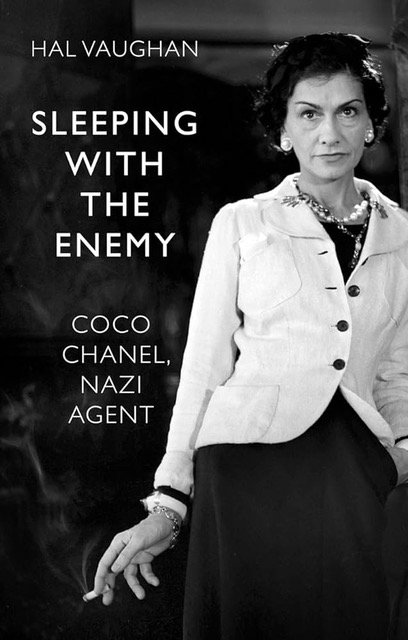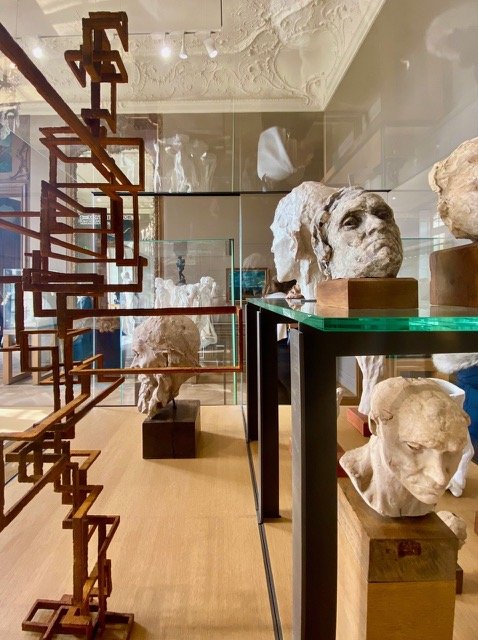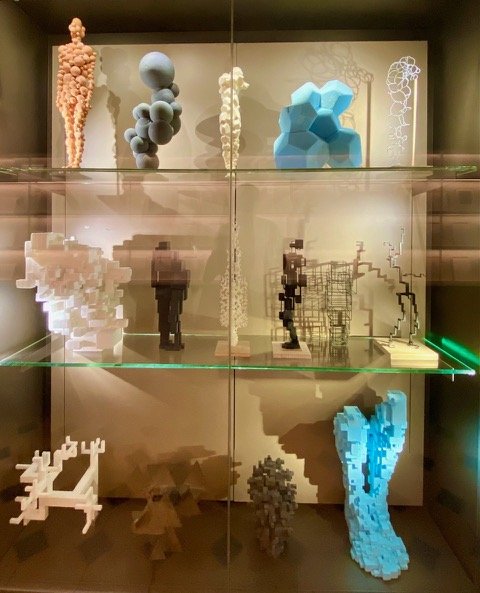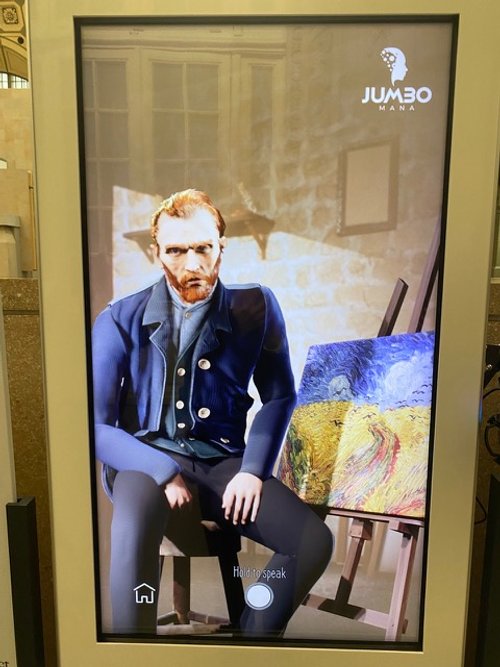collecting sunrays
Newsletter 10.29.2023
Bienvenue and welcome back to Musée Musings, your idiosyncratic guide to Paris and art. Today I want to tell you about three exhibitions that I saw this week, ones that if you are here or will be here in the next few months, you must see. But first, a quick note about Gertrude Stein and WWII. And Coco Chanel and Picasso, too.
I’ll start with Picasso, whose treatment of the women in his life has been the subject of memoirs, like the artist, Francoise Gilot’s 1964 memoir,' Living with Picasso’. And biographies, like Arianna Huffington’s (founder of Huffington Post) called ‘Picasso Creator and Destroyer’ (1988). Picasso as misogynist is a recurring theme. With the #MeToo Movement, there is no moving on. The Musée Picasso has alternatively acknowledged, as for example Orlan’s temporary exhibition ‘Les Femmes qui pleurent sont en colère’ (Fig. 1) a riff on Picasso’s La Femme qui pleure, (FIg. 2) or tried to ignore it - the fabulous exhibition curated by Paul Smith. (Fig. 3)
Figure 1. Les Femmes qui Pleurent sont en colere, Orlan
Figure 2. The Weeping Woman, Dora Maar, Picasso
Figure 3. Paul Smith at the Musée Picasso
As for Coco Chanel. Either she should have had her head shorn and been paraded naked through the streets of Paris after the Liberation or nobody should have (I’m voting for nobody). The reckoning of her past was a long time coming but has arrived. Now everybody knows that she lived at the Ritz Hotel with her Nazi lover during the Occupation. That she was not just a Nazi sympathizer but a Nazi collaborator. (Fig. 4) When the Nazis left town, she did too. Although rather than standing trial, she moved to Switzerland. The Chanel exhibition at the Palais Galliera in a few years ago, acknowledged her past with wall text by the museum’s director. In the director’s opinion, a fashion museum was not the place to discuss Coco and Collaborations, well at least not Nazi ones. A decision perhaps made easier by the fact that the museum’s expansion was underwritten by the House of Chanel.
Figure 4. Sleeping with the Enemy, Coco Chanel, Nazi Agent. Hal Vaughan
Which brings us back to Gertrude Stein. About whose stay in France during WWII, as a Jew and a lesbian, I had always wondered. (Fig. 5) It seemed like such a foolish choice, such a risky one. Until I found out about her anti Roosevelt, pro Hitler views and her close ties with Bernard Faÿ, an anti-semitic Gestapo agent who sent scores of Freemasons to the extermination camps. But who protected Stein and Toklas and Stein’s art collection from the Nazis. A little digging answered my questions. And I thought the answers would be interesting to you, too. I don’t think that Stein’s politics should be part of every discussion about her. But they should be acknowledged, just as Picasso’s treatment of the women in his life has to be.
Figure 5. Gertrude & Alice at home
Okay, moving on. As my self imposed absence from Paris approaches, I am reminded of Leo Lionni’s children’s book, Frederick. (Fig. 6) Do you know it? It’s the story of a family of field mice who spend their autumn days collecting seeds and nuts and grains for the winter ahead. Except Frederick. When the other mice ask why he is just sitting around rather than working as they are, he replies "I gather sun rays for the cold dark winter days." And indeed, when the food supplies run low, Frederick regales his family with the words and colors and sun rays he gathered. They are able to forget their hunger for a while. And that is what I am doing, I am gathering museum exhibitions to think about and write about during my mostly museum-free months ahead.
Figure 6. A page in Leo Lion’s book, Frederick
So, where have I been? For a start, n the same day that my Proust reading group met at the American Library, I went to the nearby Musée Marmottan Monet to see the just opened Berthe Morisot and the Art of the 18th Century exhibition. (Fig. 7) Which links Morisot to her 18th century French predecessors like Watteau, Boucher and Fragonard. And to her English ones, too - Gainsborough, Reynolds and Romney. Basing their conclusions on Morisot’s letters and notebooks, the curators show that Morisot was very much aware of her predecessors. The exhibition includes lovely examples of these artists’ works and Morisot’s own to prove the connections.
Figure 7. Berthe Morisot et l’Art du ZVIIIe Siècle, Musée Marmottan-Monet
Here’s a connection I wasn’t expecting. As I mentioned in an earlier post, I visited Grasse when I was on the Côte d’Azur last month. It was one of the towns I avoided on earlier trips. Because my migraines are triggered mostly by odors, it seemed foolish to visit a town dedicated to perfume. But this time, just by chance, I remembered that Jean Honoré Fragonard had been born In Grasse. And I learned that there are two museums in Grasse with a Fragonard connection. So, I went, avoiding perfumeries and perfume tours as much as possible in a city dedicated to the stuff.
One of the Fragonard connections is the house where he lived and which he decorated with en grisaille statuary. Imagine my surprise when, at the very end of the Berthe Morisot exhibition, I found myself in a replica of the same space I had visited only a month ago. Turns out that Julie Manet made a pilgrimage to Fragonard’s house a few years after her mother, Berthe Morisot, died unexpectedly at age 54. (Figs. 8, 9, 10) The Fragonard connection is not only a stylistic one between the two artists but Julie Manet believed, as her mother had, that she was a distant relative of Fragonard’s. The exhibition is here until January, try to see it if you can. It will lift your spirits.
Figure 8, Fragonard’s home, Grasse (Morisot exhibition)
Figure 9. Fragonard’s home in Grasse (Morisot exhibition)
Figure 10. Fragonard’s home, Grasse (taken by me in Grasse)
Barbara, an English friend from my Mystery Book Group (also at the American Library) asked if I had seen the Antony Gormley exhibition at the Musée Rodin. (Fig. 11) I hadn’t. But then, there I was - on a sunny Sunday in Paris. Because so many of the statues, always by Rodin, temporarily by Gormley, are in the garden, there was no better way, no better day, to see them than against a crystal blue sky. (Figs. 12, 13)
Figure 11. Antony Gormley at Musée Rodin
Figure 12. Antony Gormley, Musée Rodin garden
Figure 13. More Gormley in the garden of the Musée Rodin
Do you know Gormley? I’ll tell you more about him soon. But today, just a few photos and fewer words. Because even superlatives don’t do this exhibition justice. A few years ago, there were two exhibitions, held simultaneously, at the Musée Picasso and the Musée Rodin, comparing these two giants. Iconic Rodin statues like The Kiss and The Thinker were exhibited near riffs on them by Picasso. (Figs. 14, 15) There were some droll connections and some interesting ones, too. But nothing as thought provoking as this exhibition. Especially as a line of Gormley figures make their way inexorably toward Rodin’s Gates of Hell.
Figure 14. Rodin / Picasso. The Thinker
Figure 15. Picasso / Rodin The Kiss
In the temporary exhibition space is Gormley’s Critical Mass. Each of the 12 figures, reproduced five times, evoke different and contradictory emotions and sensations. (Figs. 16, 17)
Figure 16. Critical Mass, Gormley
Figure 17, Critical Mass, Gormley
Gormley’s smaller pieces (and some larger ones, too) are in the museum itself. Free standing in easy juxtaposition with Rodin’s statues (Fig. 18) and in glass cases integrated with statuettes and fragments by Rodin and others. (Fig. 19)
Figure 18. Free Standing Gormley with Rodin
Figure 19. Gormley figures in case
The small pieces reminded me of an exhibition that was held not too long ago at the Musée de Camondo. The artist Edmund de Waal was invited to mount an exhibition of his own small porcelain vessels. Which was tricky because the conditions set when Moise de Camondo gave his home and collection to the state was that the house had to be maintained exactly as the donor left it. Trying to find de Wall’s delicate porcelain pieces and fragments was like a Where’s de Waal(do) game rather than a meditation on de Waal’s work and the de Camondo family’s life and tragic end. (Figs. 20, 21)
Figure 20. Edmund de Waal, Musée Nissim de Camondo
Figure 21. Edmund de Waal, Musée Nissim de Camondo
I’ll tell you about one more exhibition, one which is now at the Musée d’Orsay. Vincent Van Gogh à Auvers-sur-Oise, les deniers mois (the last months). (Fig. 22) With renewed threats of terrorist attacks in Paris, I decided the one thing I would not do is mill about with a crowd of people in front of a museum waiting to get in. Which is often the case at the Musée d’Orsay, I decided that if there was a line, I would just keep walking. As it turned out, there wasn’t a line, I walked right in.
Figure 22. Van Gogh à Auvers-sur-Oise, Les derniers mois, Musée d’Orsay
I’ve been to Auvers-sur-Oise a few times now. The first time was a few years ago with my American friend, Barb. The exhibition was lovely. Of course it was, the paintings are amongst Van Gogh’s most moving. (Figs. 23, 24, 25) And when he was in Auvers, he was on a roll, he painted 74 canvases in 70 days. But there were a few jarring notes. Probably because the exhibition at the Musée d’Orsay was mounted in conjunction with the Van Gogh Museum in Amsterdam, the protector and keeper of all things Van Gogh. The exhibition begins with this wall text, “On 27 July, in the middle of a field, (Van Gogh) shot himself with a pistol and died on 29 July…” (Fig. 26)
Figure 23. Dr. Gachet's garden, Vincent Van Gogh
Figure 24, Field, Vincent Van Gogh
Figure 25. Village Church where Vincent and Theo Van Gogh are both buried
Figure 26. Wall text for Van Gogh exhibition, Musée d’Orsay
But people have been questioning that assumption for more than a decade. Starting with Steven Naifeh’s and Gregory White Smith’s biography of Vincent in which they offered a different explanation for how the artist died. They posit that he was inadvertently shot by a boy who, with his friends, was teasing Vincent. In a 2020 article that I came across, the title sums up the dilemma, “A Reevaluation of the Death of Vincent van Gogh: Suicide or Murder? The Need for a Definitive Autopsy”. Although they have not been granted permission to perform an autopsy, the author concludes that Vincent’s death “… (was) not a self-inflicted wound … and, thus, in all medical probability, a homicide.”
I don’t know how Vincent Van Gogh died. But I did find it odd that the curators of this exhibition, don’t countenance discussion. Something else I found weird was a section on films about Van Gogh’s life. No mention is made of the beautiful film that the artist Julian Scannable wrote and directed, starring Willam Dafoe as Van Gogh. Of course they didn’t mention this film because it explores the theory that Vincent was murdered and shows how it might have happened,
Let’s see, what else. Oh yes, when you leave the exhibition, to the right of the gift shop is a sort of hologram of Vincent Van Gogh (Figs 27, 28). The panel next to the figure tells us that this is AI at work. The machine has been fed thousands of pages of correspondences and we are invited to ask questions. I asked Vincent if he had committed suicide or if he had been shot. He told me he wanted to talk about his life. Okay. Then I asked what kind of friend Gauguin had been. He told me he didn’t know anyone named Gaga. What? So that was my first experience with AI. Not impressed.
Figure 27. Vincent AI
Figure 28. An explanation of how AI Vincent works
I have another two weeks to see as many museum exhibitions as I can fit in before I leave Paris for San Francisco. I have quite a few on my list to see.
Thanks so much to those of you who sent comments on my last post. I am grateful to you for them. Bisous, ‘Dr. B.’
New comment on Meeting & Greeting:
Dear Beverly, It was delightful to meet up at Café Mulot. We so appreciated your advice about exhibits, as it’s difficult to choose from all the possibilities. And we enjoyed discussing a multitude of topics. Here’s to future meetups and to being migraine free! Elaine, Indiana
New comment on Not really smelling like a rose.:
Thanks Dr. B., for solving the mystery of how Stein survived the nazis during WW2. It's a question that I have wondered about for a very long time. Vincent
Yikes, i will never be able to think of Gertrude Stein in the same way again. Fantastic article. As always. Wish I could see the exhibit in person, but your “ musings” are just as good if not better., Deedee, Baltimore
Copyright © 2023 Beverly Held, Ph.D. All rights reserved
Dear Reader, I hope you enjoyed reading this article. Please sign up below to receive more articles plus other original content from me, Dr. B. Merci!
And, if you enjoyed reading this review, please consider writing a comment. Thank you.




























